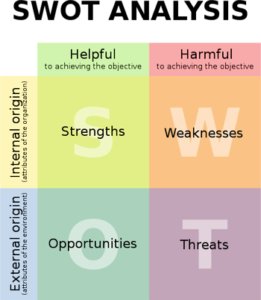Do you want to “Raise Awareness”? Well, stop, or it might be a dumb way to die.
Ever thought of dumb ways to die?
Watch this!
So, is this a good or a bad campaign?
This article from the Standford Social Innovation Review shares precious insights on this, and on many other aspects of how to make a successful campaign.
It’s worth reading it in full, but for the busy ones, here’s the digest:
There is a widely held belief within the campaigning world that hostility towards an issue, or a wrong behavior, is quite simply due to a lack of knowledge. So campaigns must “raise awareness”.
So what makes a campaign right?
This articles argues that there are there are four essential elements to creating a successful public interest communications campaign: target your audience as narrowly as possible; create compelling messages with clear calls to action; develop a theory of change; and use the right messenger.
Even if this sounds obvious to you, this articles builds its case on many examples of campaigns, and this alone makes it worth reading.
—————-
Stop Raising Awareness Already
Welcome to February in America. You’re no doubt aware that this is HIV/ AIDS awareness month and Teen Dating Violence Awareness Month. February also includes Singles Awareness Day, American Heart Month, AMD/ Low Vision Awareness Month, National Children’s Dental Health Month, International Prenatal Infection Prevention Month, African Heritage & Health Week, Congenital Heart Defect Awareness Week, Condom Week, Eating Disorders Awareness and Screening Week, National “Wear Red” Day for women’s heart health, World Cancer Day, and Give Kids a Smile Day, to mention just a few.
Unsure what to do with all your awareness? You’re not alone. Or maybe you’re still catching up on all the calls to action from January’s days of awareness: What with it being Co-dependency Awareness Month, Glaucoma Awareness Month, National Mentoring Month, Poverty in America Awareness Month, Radon Action Month, Self-Help Group Awareness Month, Stalking Awareness Month, Slavery and Human Trafficking Prevention Month, Volunteer Blood Donor Month, and Weight Loss Awareness Month all at the same time, your to-do list is probably full.
For those working on a cause they care about, the first instinct is often to make sure that as many people as possible are aware of the problem. When we care about an issue or a cause, it’s natural to want others to care as much as we do. Because, we reason, surely if people knew that you’re more likely to die in an accident if you don’t wear a seat belt, they’d wear their seat belt. And if people only knew that using condoms is critical to preventing the spread of disease, then they would use one every time.
 That instinct is described by communication theory as the Information Deficit Model. The term was introduced in the 1980s to describe a widely held belief about science communication—that much of the public’s skepticism about science and new technology was rooted, quite simply, in a lack of knowledge. And that if the public only knew more, they would be more likely to embrace scientific information.
That instinct is described by communication theory as the Information Deficit Model. The term was introduced in the 1980s to describe a widely held belief about science communication—that much of the public’s skepticism about science and new technology was rooted, quite simply, in a lack of knowledge. And that if the public only knew more, they would be more likely to embrace scientific information.
That perspective persists, not just in the scientific community but also in the world of nonprofits, marketing, and public relations. Public relations texts frequently cite awareness, attitude, and action objectives. Marketing students learn that awareness precedes action. And many of the foremost public relations and advertising agencies still report results to clients in the form of impressions—the number of people who were exposed to the message.
If the goal is solely to increase knowledge of an issue, then an awareness campaign can work just fine. But is it ever enough for people to simply know more about something? If, for example, the goal were to raise awareness among new parents of the importance of immunizing their children, you wouldn’t be satisfied if parents were simply aware. You’d want to be sure that they were also having their children immunized for the right diseases at the right age.
Or say you want people to be aware of the importance of being prepared for a hurricane. There’s a potentially life-threatening gulf between being aware of the importance of being prepared for a hurricane and actually having several cases of water set aside and an escape plan that your entire family knows and understands. Maybe your awareness goals are attached to something more abstract or where the solutions are less clear—such as the effect of implicit bias on workplace diversity or the growing threat of global warming. But in each of those cases, specific actions are available that can overcome both of those threats.
Because abundant research shows that people who are simply given more information are unlikely to change their beliefs or behavior, it’s time for activists and organizations seeking to drive change in the public interest to move beyond just raising awareness. It wastes a lot of time and money for important causes that can’t afford to sacrifice either. Instead, social change activists need to use behavioral science to craft campaigns that use messaging and concrete calls to action that get people to change how they feel, think, or act, and as a result create long-lasting change.
How Awareness Campaigns Fail
Making the public more aware of an issue can, of course, be a critical step in creating an environment where change is possible. Would there have been so much discourse around income inequality this past US presidential election if the Occupy movement hadn’t stirred up national attention in 2011? Would we have known the meaning behind #blacklivesmatter if there hadn’t been a consistent effort to make known racialized police brutality? Or would there be a discussion about transgender rights without exposure to stories through television shows such as Orange Is the New Black and Transparent?
Raising awareness about something that wasn’t known before can be a useful tactic when it’s part of a larger effort to drive social change. But to truly drive change, we have to consider the science that shows there is a more strategic, effective, and focused way to drive social change. In fact, research suggests that not only do campaigns fall short and waste resources when they focus solely on raising awareness, but sometimes they can actually end up doing more harm than good.
Before exploring the most effective ways to create awareness, it’s important to understand the ineffective and even harmful effects that awareness can have. When done wrong, an awareness campaign carries four specific risks: it might lead to no action; It might reach the wrong audience; it might create harm; and it could generate a backlash. We will examine each of these risks in turn.
When Awareness Campaigns Lead to No Action
It’s easy to assume that sharing information in an engaging way is enough to motivate people to adopt new behaviors. However, research suggests that this is not the case. The Centers for Disease Control and Prevention’s (CDC) Zombie Apocalypse campaign provides an instructive example.

In May 2011, Dave Daigle, who leads communications for some of the CDC’s preparedness work, released a campaign to raise the public’s awareness about the need to prepare for a potential emergency, such as a terrorist attack, flood, or earthquake. He was frustrated that the CDC had used the same messages every year to promote awareness of the importance of being prepared with little effect. “We have a great message here about preparedness, and I don’t have to tell you that preparedness and public health are not the sexiest topics,” he said in an interview with The Atlantic at the time.1 So he took a bold and creative approach to gain attention for a serious problem: humor.
The CDC started with a blog post, “Preparedness 101: Zombie Apocalypse,” that made the case that if you can protect yourself from the living dead, you can also survive a fire or earthquake.2 It was smart, funny, relevant, and connected—all the things a great campaign aspires to. Within minutes of its publication, more than 30,000 people tried to read the post, causing the CDC’s website to crash. The post trended on Twitter worldwide and was covered by CNN and The Wall Street Journal.
Following its viral success, the CDC launched a social media campaign informing people of how to prepare for a disaster by creating an emergency kit. The campaign had the tagline “Get a Kit, Make a Plan, Be Prepared.” In this case, the CDC wasn’t simply trying to raise awareness. There was a clear call to action—to make a kit. Using comedy and pop culture, the CDC was able to reach hundreds of thousands of people, and it certainly raised awareness—at least about the campaign.
But did extensive awareness and exposure lead people to actually make a kit? Julia Fraustino, a strategic communication and public relations scholar at West Virginia University, would say no. Fraustino wondered whether a campaign like the CDC’s could change behavior, so she designed a study to see whether campaigns that used humor to get people’s attention and increased awareness would also get them to act.3 Fraustino discovered what she called “a zombie dilemma.” In her paper, Fraustino wrote, “The CDC health communicator … and secondary campaign evaluation materials revealed that the campaign aimed to create buzz and awareness rather than behavioral change. Consistent with this goal, the campaign was found to facilitate a sense of community and support, be effective in garnering viewership, and be cost effective.”
Not only do campaigns fall short and waste resources when they focus solely on raising awareness, but sometimes they can actually end up doing more harm than good.
But in her experiment, Fraustino found that people exposed to similarly humorous messages were less likely to get prepared than those who saw messages that weren’t funny. Fraustino believes that may be due to the very thing that made the campaign so popular: comedy. She believes that the zombie messaging actually led people to take disaster preparedness less seriously. Hence the “zombie dilemma”: The very humor that made the campaign popular may also have diluted its effectiveness.
When Awareness Campaigns Reach the Wrong Audience
The second risk that poorly devised awareness campaigns have is that they reach a different audience than the one that was intended. This might be an audience that is unsympathetic to the campaign’s goals or one that might already be convinced of its goals.
In the paper “The rise of seafood awareness campaigns in an era of collapsing fisheries,” Jennifer Jacquet, an environmental studies professor at New York University, and Daniel Pauly, a marine biologist at the Institute for the Ocean Fisheries at the University of British Columbia, examined the effectiveness of seafood awareness campaigns that used food labels to reduce consumers’ consumption of certain overfished seafood.4
Food labels that help buyers determine when they are making an environmentally conscious choice seem like a smart way to help consumers make better choices at the time they are purchasing the item. Unfortunately, in this instance, labeling certain fish as ecofriendly had little effect on most consumers. The labels did not diminish the demand for overfished seafood. In fact, the only people who were found to be influenced by the labels already belonged to environmental organizations.
What’s even more troubling is that eco-friendly labeling has produced an economic incentive for seafood companies and fishermen to deceive consumers by changing the names of their products and co-opting the eco-friendly label. “Sharks, considered undesirable in Ecuadorian city markets, are filleted, relabeled and sold instead as weak fishes or even tuna,” wrote the authors. “Using DNA testing, [researchers] found that three-quarters of the fish sold in the US as ‘Red snapper’ belong to a species other than Lutjanus campechanus, ‘the’ Red snapper (in the United States).” The researchers also found that more than 50 percent of environmental advertising on seafood products is misleading. In this instance, the awareness campaign reached consumers who were already likely to avoid overfished species, and it actually created an incentive for unethical fisheries to mislabel their products.
When Awareness Creates Harm
If the aim of a campaign is to encourage people to behave in new ways, it is important to take a look at behavioral science that can lend insight into how a particular audience might perceive a message, lest you do more harm than good. Take, for instance, the Dumb Ways to Die campaign in Australia.5
 In November 2012, it seemed like the lyrics “Dumb ways to die, so many dumb ways to die” were leaking out of the iPad of every teen. The song was created for the campaign by Victoria Rail to reduce the number of people who died by stepping in front of Metro trains out of Melbourne. The video and accompanying game are charming, with an indie-style earworm and characters that make macabre deaths adorable. The strangely cheerful and catchy song topped iTunes lists of most-downloaded songs in 28 countries, and the video has more than 144 million YouTube views. That’s impressive reach by any standard.
In November 2012, it seemed like the lyrics “Dumb ways to die, so many dumb ways to die” were leaking out of the iPad of every teen. The song was created for the campaign by Victoria Rail to reduce the number of people who died by stepping in front of Metro trains out of Melbourne. The video and accompanying game are charming, with an indie-style earworm and characters that make macabre deaths adorable. The strangely cheerful and catchy song topped iTunes lists of most-downloaded songs in 28 countries, and the video has more than 144 million YouTube views. That’s impressive reach by any standard.
The campaign is also one of the most awarded in the history of advertising, receiving five Grands Prix at the 2013 Cannes Lions International Festival of Creativity. The strategy was to create an ad that was entertaining and didn’t repel people with a sad message as so many public service announcements do. In terms of awareness, the campaign knocked it out of the park. Advertising Age reported that the campaign earned more than $60 million in media impressions and that millions signed a pledge to be safer around trains. Metro said the campaign resulted in a 21 percent drop in deaths the following year.6
But there’s one coveted award the campaign didn’t earn: the one for creative effectiveness. The Cannes judges weren’t convinced that the campaign was responsible for the decline in rail accidents that followed the campaign’s launch. Those millions of views may not have translated to specific behavior change. In fact, only one of the campaign’s four stated objectives included any specific change in behavior, which was to “See a reduction of near misses and accidents at level crossings and station platforms over 12 months by 10 percent.”
One juror in the effectiveness category told Mumbrella Asia, “The numbers the case study put forward, including ‘extraordinary views on Facebook,’ didn’t really correlate with the period they were measuring against or have anything significant against people around that vicinity.”7
This campaign was explicitly focused on reducing the number of rail accidents by raising awareness of safety and getting people to be more careful around trains, but accidents account for only 25 percent of the deaths associated with heavy rail in Victoria. The Melbourne newspaper The Age reported that between July 1, 2010, and June 30, 2011, there were 46 rail deaths in Victoria, the majority of which were suicides. A 2010 article in the journal Injury Prevention cites a rate of rail suicide in Victoria that was higher than the rate for the rest of the population in Australia, and The Age reported that from 2012 to 2014, more than one person was struck by a train every week.8 The TrackSAFE Foundation, an advocacy group focused on reducing rail-related deaths throughout the country, reports that there are 150 rail suicides in Australia each year, and nearly 1,000 attempts. In June 2014, The Age reported, “Suicide by train has become so common Metro plans to build a dedicated train wash, called a ‘biopit,’ to clean train exteriors after a person is hit.”
It is worth considering that the video’s charming figures and catchy hook may have actually made death seem more appealing or normal to those already at risk. Death in cartoon form is certainly temporary and painless. At a minimum, the campaign does little to address a context that included an already abnormally high suicide rate, much to the concern of public health and mental health officials in the country.
In fact, one Metro official’s comments about the campaign suggest that concerns about suicide weren’t among the risks that she and her team contemplated pre-launch: “Before the ‘Dumb Ways to Die’ concept was presented, there was a pre-sell phone call. ‘We’re doing a song,’ said our group account director. My response: ‘I’m hanging up.’ Fearing a tacky jingle, I was pleasantly surprised that this ‘song’ concept was exactly what we were looking for. Sure, it was different and had the words ‘dumb’ and ‘death’ in the headline, but it just worked, the warmth of the creative balanced out the negativity of the consequences,” Leah Waymark, general manager, corporate relations for Metro told Advertising Age a year after the campaign launched.
This is worrisome given that communications science scholars, public health officials, sociologists, and psychologists have reported on the influence that media can have in normalizing death, suicide, and violence as something common, cool, or even charming, but most important, not permanent. A much-cited paper by David Phillips in the American Sociological Review supports what scholars call the “Werther Effect”—that newspaper coverage of suicide is associated with higher suicide rates in their communities.9 Later work shows a clustering of suicides after television news coverage of suicide.
Unfortunately, it is uncommon for practitioners to conduct a review of academic literature as part of the early stages of any effort. Campaigns rooted in research are far more likely to conduct new research by testing their messages or surveying a target audience about their likelihood of acting. The gulf between scholarship that could help practitioners avoid harm, reduce risk, or increase the effectiveness of their efforts and practice is common and wide.
When Awareness Leads to Backlash
Raising awareness also gets dicey when issues have the potential to generate controversy. When issues are complicated by partisan politics, for example, the message may be vulnerable to backlash and slow down or halt progress on an issue. This was the case in a public policy initiative in support of the HPV vaccine.
In 2006, the CDC recommended a national requirement that adolescent girls get vaccinated against human papilloma virus (HPV), a sexually transmitted disease that causes cervical cancer. The recommendation, and the national lobbying campaign that followed, pushed for a state mandate that required the HPV vaccine for school enrollment. It followed US Food and Drug Administration approval earlier that year for Gardasil, an HPV vaccine. Gardasil, produced by Merck, was the first drug to hit the market, due to a concerted and highly public effort to fast-track the drug so that it could establish Merck’s dominance in the market.
A mandate that preteen girls be vaccinated against HPV became a political battleground because some social conservatives believed that the legislation was a gateway to sexual promiscuity. Prior to the controversy, 90 percent of children received the vaccine, but in the years that followed, only 33 percent of girls received it, and just 7 percent of boys did.
Research tells us that people believe information about vaccine risks and benefits that supports their cultural and political values. Political polarization increases as the news media report on the topic and advocates raise its profile. When this happens, people are exposed to cues that signal “sides” of the issue and that either resonate with their beliefs or threaten how they see themselves and the world. So it’s not surprising that a public campaign for a government-mandated vaccine to protect adolescent girls from a sexually transmitted disease would create cultural controversy. Government regulation, check. Reproductive rights, check. Children and sexuality, check and check.
Could this story have turned out differently? Yale University professor Dan Kahan, who researched the program, says yes. If there had not been a high-profile lobbying campaign to fast-track Gardasil, the vaccine would have slowly been introduced to boys and girls through their personal physicians and existing programs that provide access to childhood vaccinations, a more traditional path for introducing new vaccines, similar to the introduction of the hepatitis B vaccine (HBV).10 In the end, the HPV campaign probably did more harm than good by leading to a reduction in the number of children who received the vaccine.
Creating Awareness That Leads to Action
To move the needle on the issues we care about the most, research and experience both show that we must define actionable and achievable calls to action that will lead a specific group of people to do something they haven’t done before. That is the approach that the communications consulting firm Spitfire Strategies takes when working with its clients.
In every consulting project that Spitfire works on, Spitfire President Kristen Grimm and her team work to get nonprofit leaders to identify concrete goals for their work. Grimm is convinced that by focusing on what you want changed, you can identify a call to action whether you are working to make teens stop texting and driving, helping people make healthier choices, or working on issues where solutions are less obvious, such as addressing implicit bias or income inequality.
Here at the University of Florida College of Journalism, we’re building an academic discipline called “public interest communications,” which we define as the development and implementation of science-based, planned strategic communication campaigns with the goal of achieving significant and sustained positive behavioral change or action on an issue that transcends the particular interests of any single organization.11
There are four essential elements to creating a successful public interest communications campaign: target your audience as narrowly as possible; create compelling messages with clear calls to action; develop a theory of change; and use the right messenger. We will explore each of these four elements in the following sections.
Target Your Audience as Narrowly as Possible
 One of the most important tasks in crafting a public interest communications campaign is to identify your target audience—the individuals or groups whose action or behavior change will be most important to helping you achieve your goal. One of the best examples of this approach is a case that didn’t begin as public interest communications but certainly had lasting implications for freedom of speech.
One of the most important tasks in crafting a public interest communications campaign is to identify your target audience—the individuals or groups whose action or behavior change will be most important to helping you achieve your goal. One of the best examples of this approach is a case that didn’t begin as public interest communications but certainly had lasting implications for freedom of speech.
In 1932, Bennett Cerf, cofounder of Random House Publishing, acquired the rights to publish James Joyce’s Ulysses in the United States, believing that the book would be as successful as it had been throughout Europe. But Cerf had a problem. The book was banned in the United States and would be seized as soon as it came off the printing press, which would lose Cerf millions of dollars. And because of the ban, there were several pirated versions of the books floating around that threatened the original text.
Cerf and his attorney, Morris Ernst, could have launched a campaign to raise Americans’ awareness of the literary significance of the book or the harms of censorship. They could also have printed the book in the face of the ban, which might have generated headlines. But that would have brought them no closer to getting the ban removed. They chose a different path.
To move the needle on the issues we care about the most, research and experience both show that we must define actionable and achievable calls to action.
Ernst identified a US District Court judge in New York City, John Woolsey, who was known for his support of the First Amendment and who had struck down several rulings on obscenity. Then Cerf and Ernst hired a man to board the Aquitania ocean liner in Europe with a copy of Ulysses in his bag and disembark in New York City, where the book would be impounded by customs, and the smuggling case would make it to Woolsey’s courtroom. Cerf and Ernst knew that no additional documents would be considered in the case and that only what was contained between the book’s covers would be admissible as evidence. So they stuffed a copy of the book with every piece of literary critique they could find—including an essay by writer Ezra Pound—citing the book’s contribution to literature.
As expected, the man and his copy of Ulysses were detained at customs, and the case went to court in fall 1933. In his decision, United States v. One Book Named Ulysses, Woolsey wrote, “Each word of the book contributes like a bit of mosaic to the detail of the picture which Joyce is seeking to construct for his readers.” Cerf and Ernst won the case, and the book was on the press within 10 minutes of the ruling. Their sophisticated approach to the problem not only brought one of the world’s most important pieces of literature to the United States, but also resulted in what Ernst called “a bodyblow for the censors.”
Cerf continued to fight against censorship of important literature, and Ernst went on to become one of the founders of the American Civil Liberties Union (ACLU). Their story provides a critical lesson for social change: When you are clear about your goal and find the right strategy, your target audience may be as narrow as a single person.
Create Compelling Messages With Clear Calls to Action
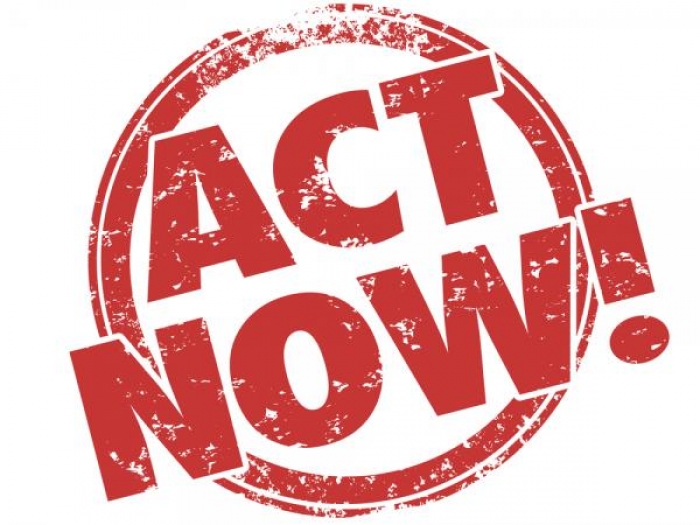 It’s important to develop a comprehensive understanding not only of the audience you are trying to reach and what will resonate with them, but also of the complexity of the issue you are trying to affect and its context. It is particularly important to craft campaign messages, stories, and calls to action that do not threaten how an audience sees itself or its values. Research into how your target audience forms opinions and who influences them will also drive your communication strategy, directing you toward potential partnerships, messages, and stories.
It’s important to develop a comprehensive understanding not only of the audience you are trying to reach and what will resonate with them, but also of the complexity of the issue you are trying to affect and its context. It is particularly important to craft campaign messages, stories, and calls to action that do not threaten how an audience sees itself or its values. Research into how your target audience forms opinions and who influences them will also drive your communication strategy, directing you toward potential partnerships, messages, and stories.
For Cerf and Ernst, focusing on their audience meant identifying and swaying a single judge. It’s easy to look at that case as an outlier, but consider social issues that have a much larger audience. Take the “Let’s Move” campaign, launched by former first lady Michelle Obama.12 This highly strategic campaign is rooted in the deep body of research about the causes of childhood obesity and driven by the social science about how to communicate effectively on health issues. A campaign that could have focused solely on getting kids to eat less instead looked at research on the underlying causes of obesity.
The first lady started with policies that would ensure that kids got healthier meals at school. Rather than promoting the health dangers of soda and sugar-sweetened beverages, she focused on getting kids to drink more water. Rather than vilifying the food industry, Obama worked with industry to reduce fat, sodium, and sugar in foods such as breakfast cereal and macaroni and cheese. And she’s changing how people see what they eat, with new food labeling laws that will increase transparency and will start appearing in 2018. It appears that the campaign is working. Childhood obesity is no longer increasing, and among children between the ages of 2 and 5, it’s dropped by nearly half.
Compare that approach with the “Just Say No” campaign launched by former first lady Nancy Reagan.13 Just Say No was essentially an education program, as solid an example of a campaign rooted in the information deficit model as one could hope to find. Just Say No supported programs like DARE, which brought police officers into schools to educate kids about the dangers of drugs. Today the program is effective because it emphasizes helping kids role-play the kinds of conversations they might have when confronted with the opportunity to use drugs. But in its original version, which was more focused on generating fear of the consequences of using drugs, evaluations showed that kids who went through the program were actually more likely to use drugs and alcohol as they got older, not less. Fortunately, external evaluation made it possible to course-correct the program.
Part of the reason Let’s Move is working is because of the specific calls to action for each audience. Telling people what you want them to do is critical, but an effective call to action is not just a restatement of an overarching goal. Denver Water’s “Use Only What You Need” campaign did this brilliantly. The purpose of that campaign was to get residents to reduce their water use. Dozens of groups have tried and failed to get people to conserve water. But Denver Water’s call to action to “use only what you need” doesn’t feel like a sacrifice. It’s a positive way to urge people to avoid waste. And they backed their campaign up with precise calls to action, such as “Water two minutes less.”
In addition, the city of Denver created a context for success by replacing 10,000 public school toilets with more water-efficient ones and moving to tiered pricing to reward lower water use. After nine years, Denver residents’ water use dropped to a 40-year low, equaling what people were using in 1973 when the city had 350,000 fewer residents.14 While we were unable to find any external evaluation of the campaign, we can see why it might have worked: a clear and compelling call to action delivered in an appealing way to a carefully considered target audience.
Develop a Theory of Change
 Identifying the right target audience and delivering a clear call to action that people will act on isn’t dark magic. It requires having a theory of change—a methodology or road map for how you will achieve change that includes objectives, tactics, and evaluation— and knowing the issue well enough to know where change will have its greatest effect.
Identifying the right target audience and delivering a clear call to action that people will act on isn’t dark magic. It requires having a theory of change—a methodology or road map for how you will achieve change that includes objectives, tactics, and evaluation— and knowing the issue well enough to know where change will have its greatest effect.
Tying a communications strategy to a theory of change helps ensure that your communications efforts are tied to overarching goals, not simply focused on promotion or awareness. Building a strong theory of change requires the same elements that a solid, action-oriented communications plan does: a clear goal, a clear understanding of what will be different and what will cause it to change, and an understanding of what will influence people to act.
The Montgomery Bus Boycott provides just such an example. Most people know about Rosa Parks’s role in that story. But there was another woman behind the boycott whose understanding of strategy, message, and messengers was critical to the boycott’s effectiveness. Jo Ann Robinson was a faculty member at Alabama State College in Montgomery. Just before Christmas in 1945, Robinson boarded a Montgomery, Ala., city bus to head to the airport to visit family up north for the holidays. The bus was nearly empty, and Robinson chose one of the seats toward the middle of the bus—seats that were designated for white riders if the bus was full, but that blacks could use when the bus was empty. As she sat, the driver came toward her with his arm raised. Humiliated, Robinson ran from the bus.
Robinson never forgot the pain of that day. When she became president of Montgomery’s Women’s Political Caucus, she wrote a letter to the mayor, urging him to address three specific issues faced by black riders. “Mayor Gayle,” Robinson wrote, “Three-fourths of the riders of these public conveyances are Negroes. If Negroes did not patronize them, they could not possibly operate. More and more of our people are already arranging with neighbors and friends to ride to keep from being insulted and humiliated by bus drivers.”
Identifying the right target audience and delivering a clear call to action that people will act on isn’t dark magic. It requires having a theory of change.
Robinson’s letter went unanswered, and so she waited for the right moment for the threatened boycott. It seemed as though the moment arrived in spring 1955 when 15-year-old Claudette Colvin was arrested for refusing to surrender her bus seat, but Colvin swore at the police as she was arrested, and Robinson feared that the community would not rally around her. Later that year, another young woman was arrested for the same offense, and still Robinson waited. But on Thursday, December 1, 1955, when Rosa Parks quietly declined to give up her seat, Robinson knew the moment had come. Parks was highly regarded in Montgomery, and her long history in the civil rights movement had won her both credibility and affection.
Identifying the right target audience and delivering a clear call to action that people will act on isn’t dark magic. It requires having a theory of change.
As soon as Robinson heard that Parks had been arrested, she went to her office and typed up a flyer calling on blacks to boycott the city’s buses. Robinson and her students made 50,000 copies of the flyer and stayed up most of the night cutting and bundling them. The next morning, she and her students got the bundles into the hands of influential and well-connected blacks throughout the city. On Saturday, Martin Luther King Jr., released his own flyer. The boycott on the following Monday was so successful that civil rights leaders voted to continue the boycott until a US Supreme Court case on the topic was decided. The boycott lasted 381 days, starting the day of Parks’s court hearing and ending the day that the Supreme Court decided in favor of ending segregation on public transportation.
Robinson had a theory of change: She knew that a boycott would provide critical pressure because blacks made up 75 percent of bus riders, and that if she could get all of them to participate, the company would have to accede to their requests or suffer huge financial losses. She also understood that the boycott had to have the right emotional impetus—one that would be powerful enough to sustain the protests for months. Because Parks was known and beloved, Robinson knew that her arrest for failing to give up her seat would inspire others to boycott in a way that Colvin’s would not. It was a theory of change that worked.
Use the Right Messenger
 Robinson intuited something else that research would bear out decades later. Successful public interest campaigns need a narrowly defined audience, clear calls to action, and a theory of change. But they also need one more thing—the right messenger. Robinson knew that the community would support Parks in a way that they would not support Colvin. In order to inspire and persuade people to adopt a new behavior or a new way of thinking, having the message come from people who have authority and credibility in your audience’s world matters.
Robinson intuited something else that research would bear out decades later. Successful public interest campaigns need a narrowly defined audience, clear calls to action, and a theory of change. But they also need one more thing—the right messenger. Robinson knew that the community would support Parks in a way that they would not support Colvin. In order to inspire and persuade people to adopt a new behavior or a new way of thinking, having the message come from people who have authority and credibility in your audience’s world matters.
Who is influential in a community is tied to whom people trust for information. And whom people trust is very much connected to how people see themselves, their values, and their identities. Social psychology tells us that if a call to action asks someone to do, believe, or represent something that runs counter to how they see themselves, or poses a risk for maintaining that vision of themselves, then they are not going to even entertain the idea.
David Sleeth-Keppler, a social psychologist at Humboldt State University, and his colleagues at ecoAmerica conducted a study to examine whom people turn to for information on climate change.15 They found that participants who were more skeptical of climate change or who had little trust in official messengers, such as scientists or politicians, turned instead to informal communicators for information about climate change. Skeptics placed their trust in religious leaders, coworkers, family, friends, and neighbors for information and solutions for climate change.
Chasing Ice, the Academy Award-winning climate change documentary that is dressed up as an action-adventure film, understood this and utilized community influencers to reach skeptical audiences. Following the release of the film, director and producer Jeff Orlowski and his team at Exposure Labs worked with a team of strategists to launch the Chasing Ice Ohio tour, a social impact campaign, in spring 2014.
The campaign sought to shift the political conversation in two ways: First, it encouraged audience members to use their voice through social media to influence friends, family, and community. Second, the campaign sought to foster a national social media campaign targeted at the Ohio congressional district of Republican Rep. Pat Tiberi, who openly denied climate change, with the goal that he would change his position on the issue (which he eventually did).
From the beginning, the team targeted a particular segment of Ohio residents: constituents from Tiberi’s district, faith leaders, the agricultural community, recreational sports enthusiasts, and politicians. They understood that they would need to partner with community influencers to reach audiences that would otherwise not see the film and participate in the campaign. They held 90 screenings and Q&A sessions across Ohio with Orlowski and the Chasing Ice team. These sessions sought to connect the dots between climate change worldwide and the impact of these changes on Ohio communities.
A report on the film’s impact notes, “Faith-based groups such as the Evangelical Environmental network, Catholic Climate Covenant, and Interfaith Power and Light were extremely important strategic partnerships due to their large number of conservative members.16 Cultivating these partnerships meant getting the film to members of the district who might not normally have been open to a film on climate change. By working with these faithbased groups, the team members were able to collaborate with local religious leaders who already had established language to reach out to congregations in order to share the film and the local call to action. One screening movingly resulted in a pastor leading a prayer for Tiberi to acknowledge the science of climate change.” By working with influencers in these traditionally skeptical communities, the campaign was able to reach a new audience and saw success in shifting climate beliefs.
Put Accelerant on the Fire of Change
Effective and strategic communication is fundamental to any effective campaign. It’s a bit like gasoline poured on a flame. The fire flares, and you can no longer separate the flame from its fuel. But the flame becomes large enough to spread. If your idea, your goal, or your plan is a flame, effective and strategic communication will make that idea spread.
How lucky the world is that Martin Luther King Jr., Mahatma Gandhi, and the suffragettes recognized the role that strategic communications plays in driving change. And how lucky we are to be alive in a moment when we can bring together the best of what we know from academic research and behavioral science, along with an extensive history of practice to craft campaigns that move beyond simply raising awareness of an issue to getting people and organizations to drive lasting change and build a better world.
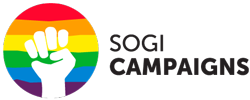


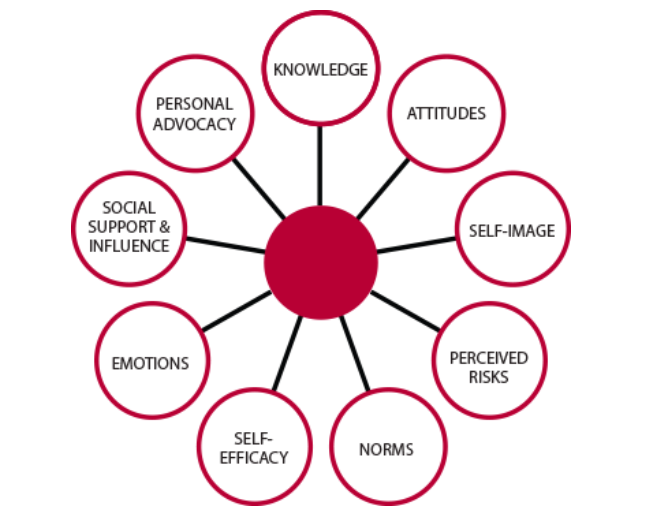












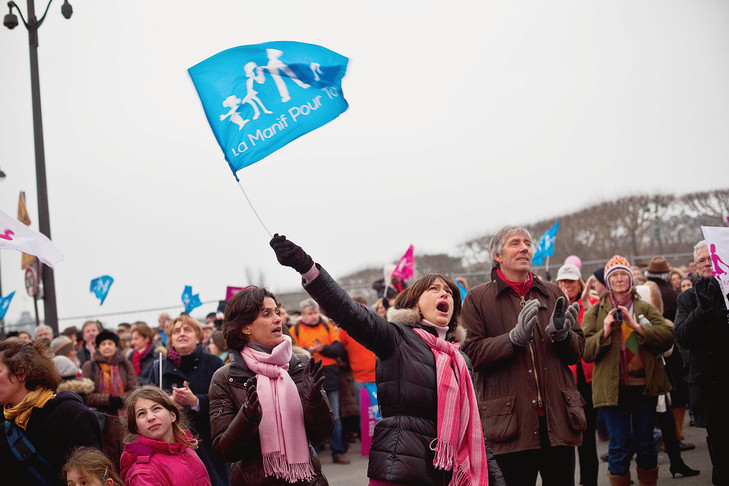





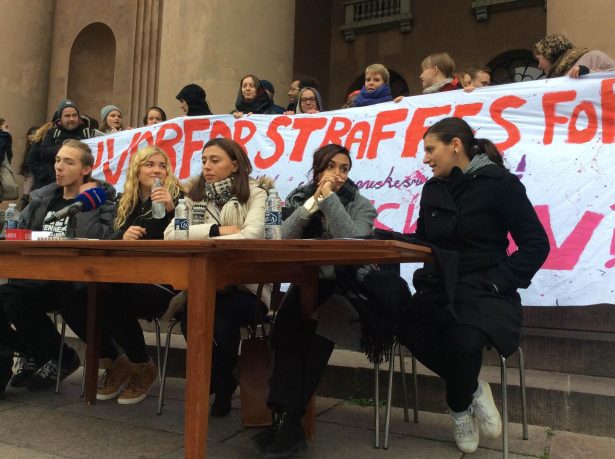
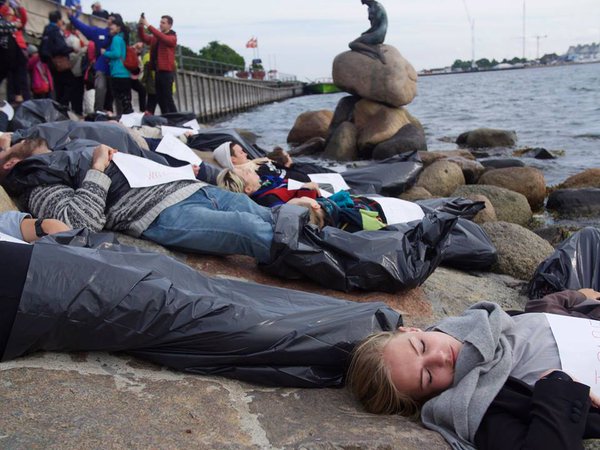
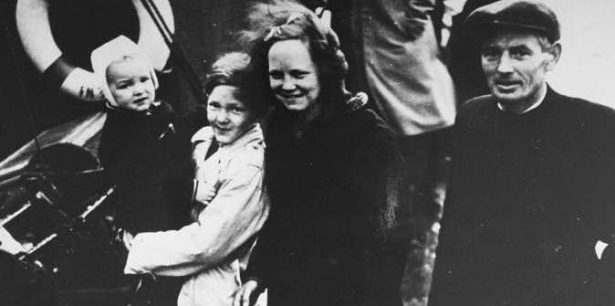
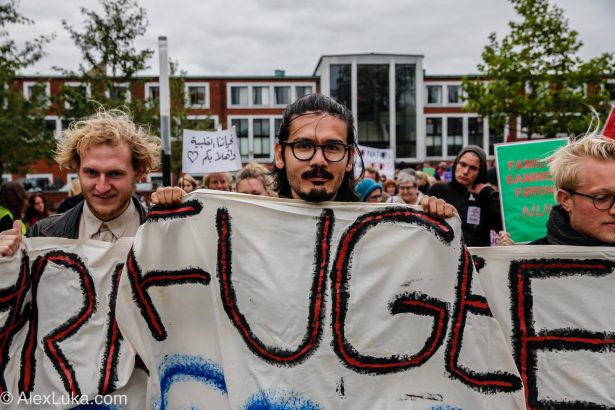
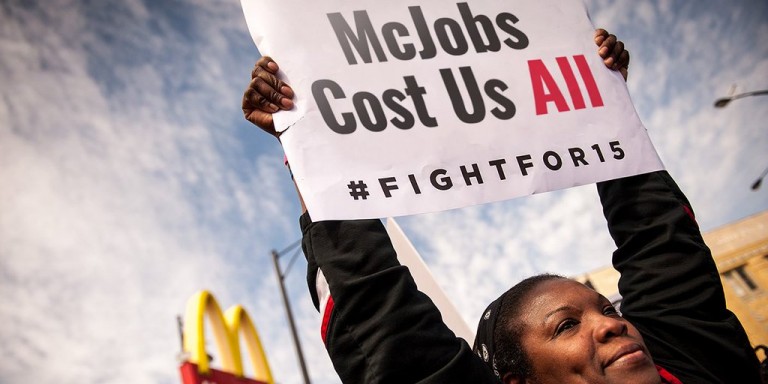
 The Service Employees International Union (SEIU)-supported
The Service Employees International Union (SEIU)-supported 



